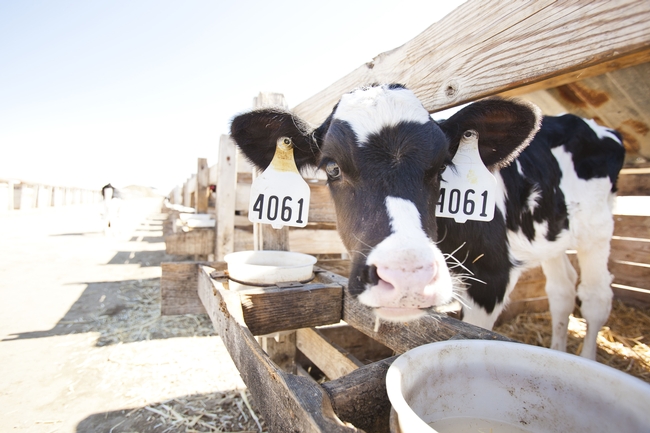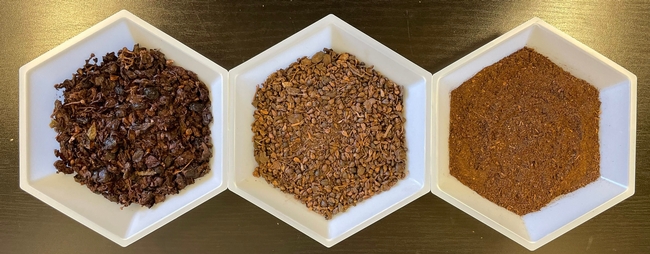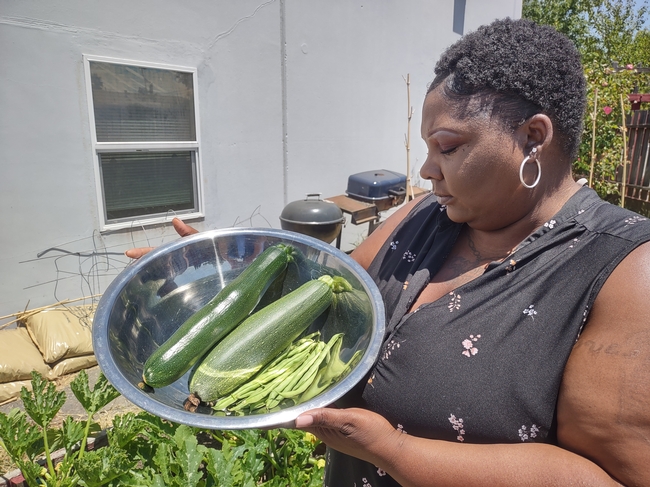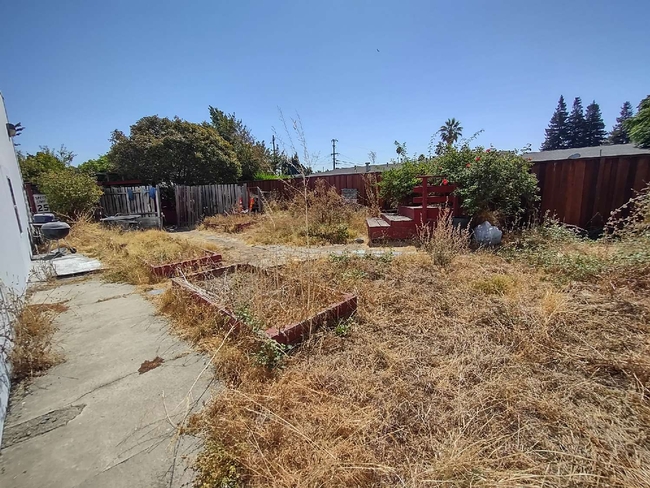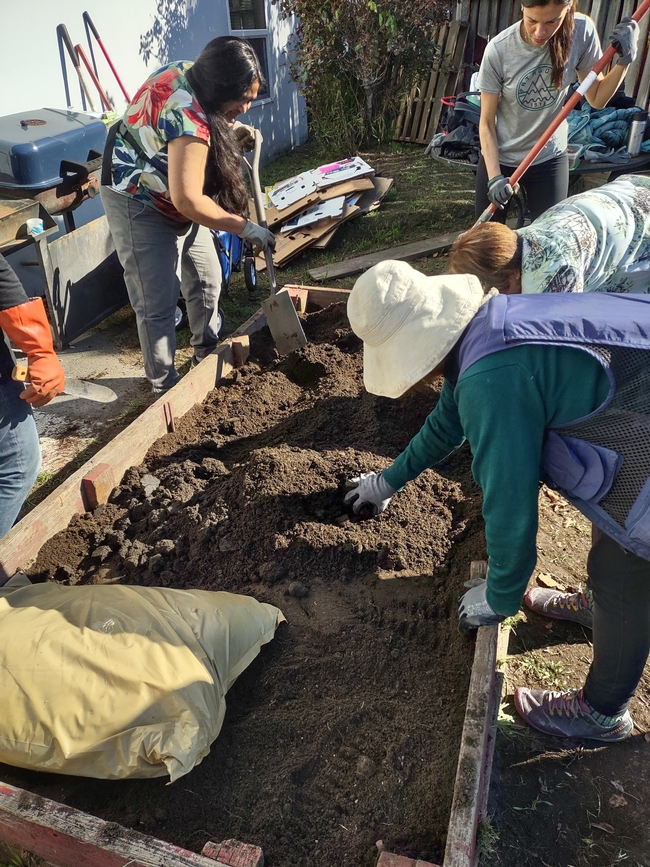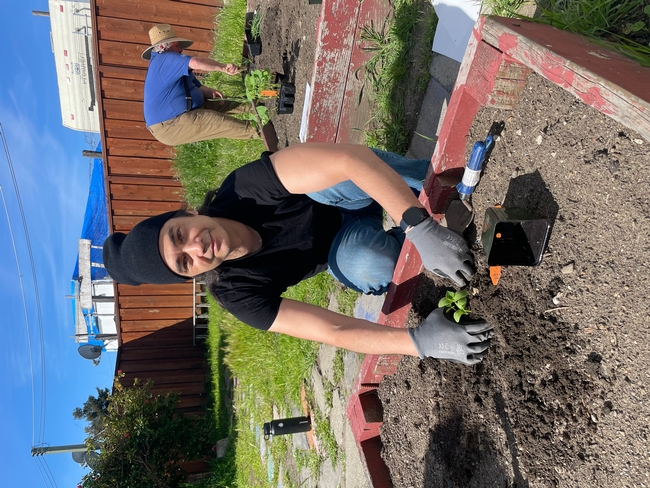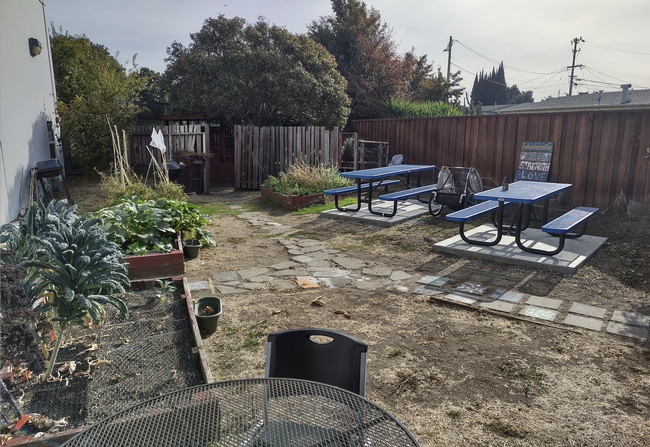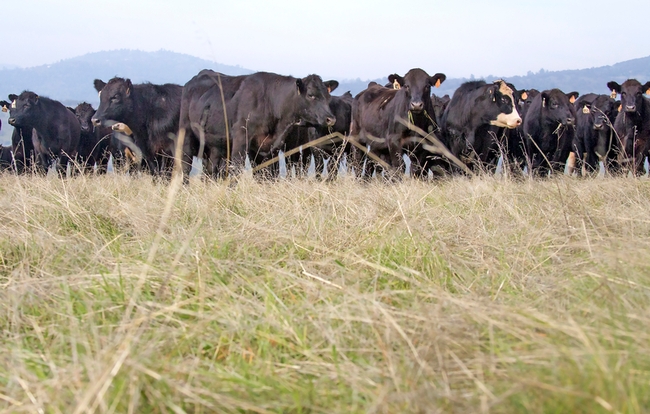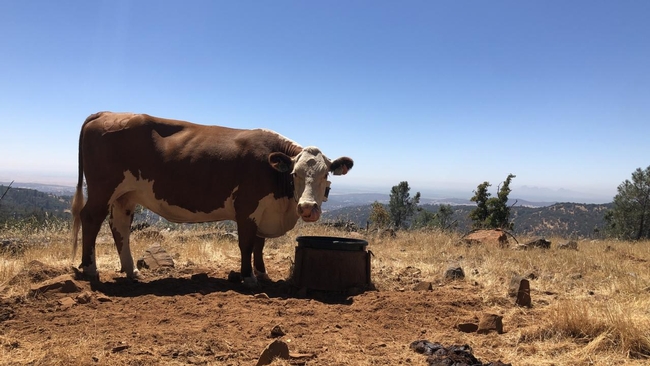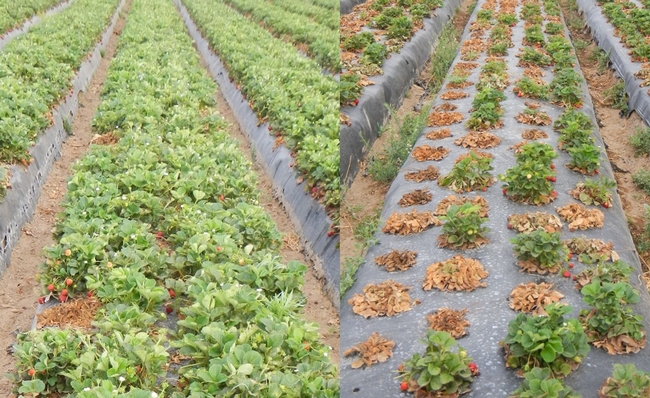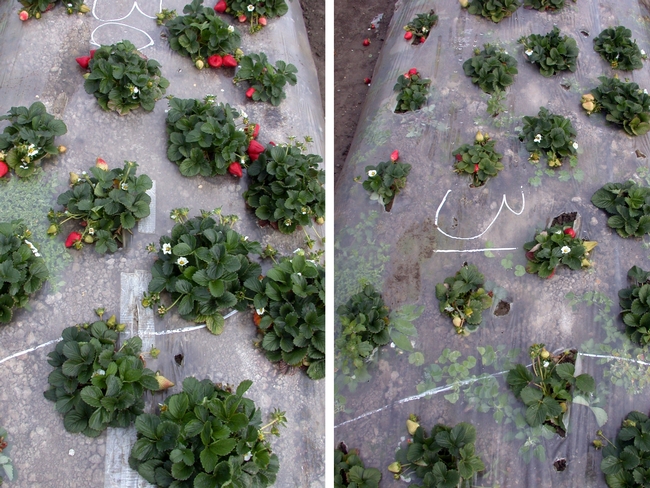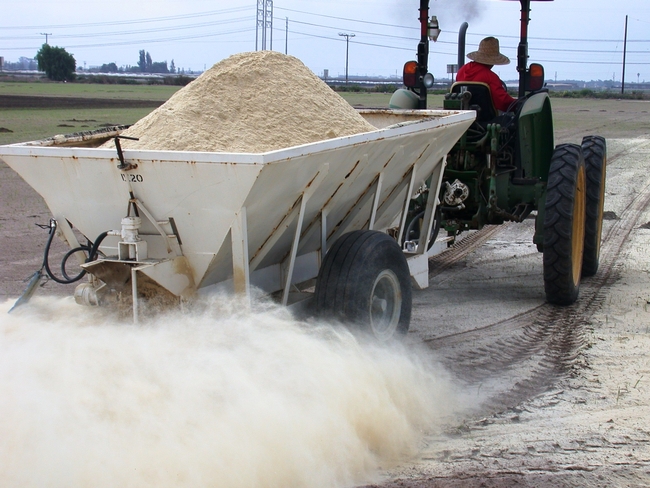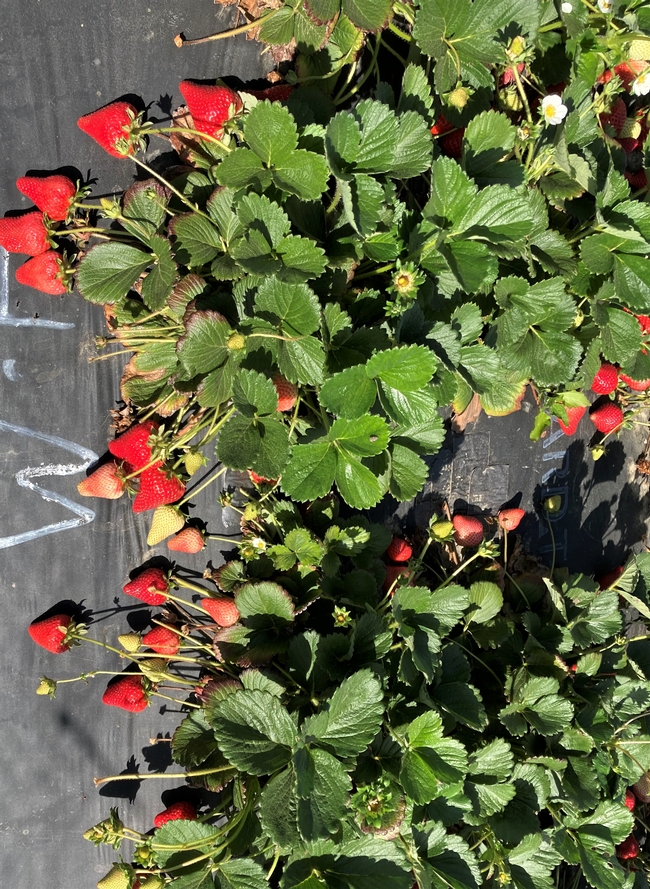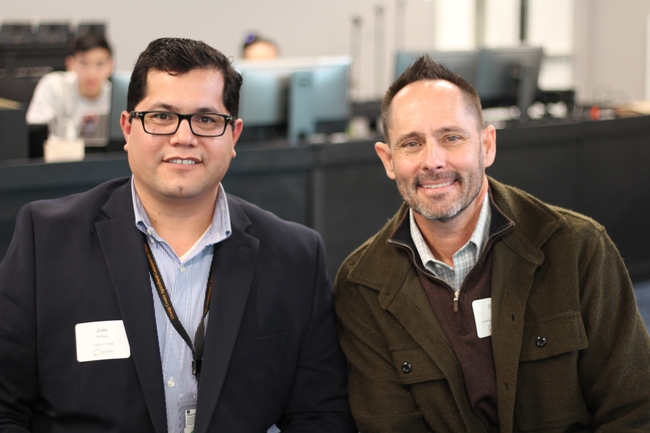Posts Tagged: FOOD IT
Grape seeds, stems and skins can reduce dairy cattle emissions
Low-cost wine industry additive also improved feed efficiency and milk quality
Researchers at University of California, Davis, added fresh grape pomace left over from winemaking operations to alfalfa-based feed for dairy cows and found that methane emissions were reduced by 10% to 11%.
The preliminary findings could offer a low-cost sustainable pathway for vineyards to reduce waste while helping dairy operations maintain quality while cutting back on emissions of methane, which is a powerful greenhouse gas.
“This is the first time anybody has shown that this can work in California,” said Ermias Kebreab, an animal science professor and associate dean of global engagement at UC Davis. “You're reducing emissions, you're improving the quality and it may also reduce the cost of production.”
The pilot research project, which will be detailed in a paper later this year, also found that mixing in grape pomace improved feed efficiency and increased healthful fats, said Selina Wang, an associate professor of Cooperative Extension in small scale fruit and vegetable processing.
“We found that the feed with the additive of grape pomace changed the fatty acid composition of the milk and, in particular, increased the polyunsaturated fats, which are the main fats in grape pomace,” Wang said. “This suggests that supplementing the feed with an optimal fatty acid profile may have positive impact on the fatty acid profile of the milk and increase their health benefits.”
Symbiotic commodities?
In 2022, California was the leading dairy producer in the country, generating $10.40 billion in sales, while 90% of wine production came from the Golden State, with a market value of $5.54 billion.
Processing grapes for wine generates thousands of tons of waste in the form of grape pomace, which consists of leftover seeds, skins and stems. Dairy and livestock are responsible for more than half of the state's methane emissions, owed largely to cow burps.
They are the top two agricultural commodities in California, according to state production statistics, and reducing waste and emissions for both industries are key to the state meeting its climate goals.
Tannins for emission reductions
Wine grapes are high in fats and tannin, which is known to reduce methane emissions, so Kebreab sought to test if adding grape pomace to feed could have a positive effect while not adversely affecting production.
“It's a byproduct that's not being used much,” he said. “This is something that can be included in our efforts to try to reduce emissions.”
A mix of feed options
To do the research, scientists worked with Holstein dairy cows and gave the animals feed consisting of alfalfa, wheat, almond hulls, cottonseed and grain. After two weeks, the cows were split into three groups: A control group with no change in diet, another where the feed combination included 10% grape pomace and a third that received 15% grape pomace.
Every four weeks, the cow groups would change feed combinations.
They were fed twice daily by postdoctoral students and interns, and emissions were monitored daily. Milk production was documented in the morning and evening and milk samples were collected weekly to analyze for fat, protein, lactose and other measurements, which showed no differences between the control and other groups.
Methane and hydrogen emissions were reduced compared with the control group, suggesting that grape pomace reduced enteric emissions without affecting production.
“I think the dairy industry will be very interested in this,” Kebreab said. “Sometimes when you're using additives, they have palatability issues. With grape pomace, they absolutely love it.”
Next on the list is a trial with olive pomace and working to understand the mechanism that reduces emissions. “If we have a better understanding of the mechanisms, we can select the feed additive or a mix of feed additives to reduce dairy cattle emissions and make dairy milk healthier while making use of the agriculture byproducts,” Wang said. “There's a lot of room to grow in this space and we're excited about this work.”
The research was supported by the California Dairy Research Foundation.
This article was first published on the UC Davis news site.
Homeless people cultivate food, better health while gardening in Alameda County
Fresh fruits and vegetables are essential to a healthful diet, but it's hard to keep perishable foods on hand if one doesn't have a refrigerator or a home. To enhance the health of homeless people, the CalFresh Healthy Living, UC Cooperative Extension team in Alameda County has partnered with the South County Homeless Project to grow fresh produce for people staying at the emergency housing in Hayward.
For the past seven years, CalFresh Healthy Living, UCCE Alameda has been delivering nutrition lessons to residents of the South County Homeless Project, part of Building Opportunities for Self Sufficiency. The classes include Rethink Your Drink, Food Safety, Making Every Dollar Count, Eat Healthy Be Active Community Workshops, and Fresh from the Garden.
The South County Homeless Project facility houses 24 people for up to a year. With the help of the CalFresh Healthy Living, UC Cooperative Extension team, its existing garden was refurbished and redesigned. The large outdoor garden behind the facility offers therapeutic gardening opportunities to residents and provides food for their meals.
"I love the garden and when the cook cooks the vegetables, they taste amazing,” said one resident. “I am thankful for this garden and for having the CalFresh Healthy Living team.”
At one time, South County Homeless Project's backyard featured a flower garden. After years of neglect, weeds overtook the garden.
In 2022, CalFresh Healthy Living, UCCE Alameda proposed getting residents involved in growing food by resurrecting the garden with edible plants.
“Not only could we continue to engage residents in nutrition education classes, but we could also work together to reinvigorate their neglected garden,” said MaxFairbee, nutrition educator withCalFresh Healthy Living team,UCCE Alameda.
More than 15 varieties of herbs and vegetables planted
Residents and staff set out to replace the weedy beds with a vegetable and herb garden.
“We worked with South County staff and residents on the design, clean up, planting, harvesting and ultimately incorporating food from the garden into the kitchen for residents to enjoy the fruits of their labor,” Fairbee said.
For gardening expertise and support, Fairbee enlisted the UC Master Gardeners of Alameda County's Community Garden Team to help. While the CalFresh Healthy Living, UCCE staff continued providing nutrition classes, the UC Master Gardener volunteers trained the residents on the basics of gardening.
In April, after heavy rains, the group planted 50 seedlings, half donated by the UC Master Gardeners. They planted two varieties of lettuce,arugula, four varieties of tomatoes, zucchini, kale, onions, cucumbers, green beans, Swiss chard, kale, basil, cilantro, tarragon, thyme, parsley, rosemary, oregano and mint.
From garden to table
“In May, we harvested lettuce and in June, we harvested green beans, cucumbers, kale and onions,” Fairbee said.
The fresh vegetables and herbs were used to prepare salads, sandwiches and pasta dishes for the residents. Fairbee and the other educators have also used the fresh produce for cooking demonstrations and tastings as part of their Fresh from the Garden class.
"We have been able to use many of the veggies as sides or to go in the salad," said one of the South County Homeless Project cooks.
"One of the chefs used the zucchini in the pasta sauce, it was so good! I didn't really know you could use it that way!" said a resident.
After tasting summer squash andgazpacho made with tomatoes from the garden, a South County resident namedSelina said, "I was surprised how good the raw summer squash tasted and how the flavor was different after it was cooked. I'll definitely be adding more zucchini to my plate."
Challenges to keeping the garden going
To keep the garden healthy, they faced competition with plant-chewing snails, slugs and aphids and cats digging in the soil. Because the water source is over 200 feet from the garden, they run a long hose across the main path, along the parking lot to water the plants, then unhook the hose and stash it indoors after each use so that it won't get stolen.
Another challenge of maintaining the garden is getting enough residents and staff to volunteer to work on it.
“Although staff are supportive of the garden, none actually have time to work in the garden,” Fairbee said.
The residents harvest, wash and store the produce in the kitchen. Only four to six of the 24 residents are typically interested in working in the garden, pulling weeds and protecting the plants from pests – most are focused on getting a new job and a home. South County residents usually leave the temporary housing within a few months.
For more consistent garden maintenance, Fairbee is looking to other community groups for volunteers. He is also hoping to persuade the county government to install a water spigot close to the garden so they can install drip irrigation to water the garden.
“We'd like to work with the UC Master Food Preservers to teach residents how to preserve herbs and vegetables,” Fairbee said.
He hopes South County Homeless Project residents will continue gardening in their new homes to grow fresh vegetables so they can enjoy a more nutritious diet and better health.
Beyond the fresh food, the South County Homeless Project residents and staff enjoy the ambience of the garden.
"It's really nice to go back there and just sit, it's really peaceful," said one staff member.
A resident added, "(The garden) relaxes me from stress. I love the garden."
Understanding cattle grazing personalities may foster sustainable rangelands
Matching herds to landscape can support animal growth and ecological needs
Not all cattle are the same when it comes to grazing. Some like to wander while others prefer to stay close to water and rest areas.
Recognizing those personality differences could help ranchers select herds that best meet grazing needs on rangelands, leading to better animal health and environmental conditions, according to a new paper from the University of California, Davis, published in the journal Applied Animal Behaviour Science.
“Cattle can actually be beneficial for the rangelands,” said lead author Maggie Creamer, who recently earned her Ph.D. in animal behavior at UC Davis. “Vegetation in rangelands actually need these kinds of disturbances like grazing.”
Ranchers can add elements to the rangeland such as water, mineral supplements and fencing to influence where cattle graze, but little research has been done on how those efforts affect individual cows. Considering personalities could save money.
“If you're spending all this money to add a management tool in order to change the distribution of your animals, that's a huge cost to ranchers,” said Creamer. “Thinking about other tools, or selecting certain animals with these grazing traits, might be a better way to optimize the distribution on rangeland rather than spending a bunch of money for something that may ultimately not pan out for all your animals.”
Effects of grazing
Livestock graze on an estimated 56 million acres in California, and healthy rangelands host native vegetation and animals, foster nutrient cycling and support carbon sequestration.
Uneven grazing can degrade water quality, soil health and habitats. Optimizing grazing — including the even spread of cow pies — can improve the ecosystem while also reducing fuel loads for wildfires.
To better understand individual grazing patterns, researchers went to the UC Sierra Foothill Research and Extension Center in Browns Valley and tracked 50 pregnant Angus and Hereford beef cows fitted with GPS collars.
The research
The cattle, which were tracked from June to August over two years, had access to 625 acres of grasslands and treed areas ranging in elevation from 600 to 2,028 feet. In the second year, a new watering site was added at a higher elevation.
Across the two years, the cows showed consistent and distinct grazing patterns even when water sources changed. Age and stage of pregnancy did not affect patterns, though cattle tended to clump near water and rest sites on hotter days.
The cows that ventured into higher elevations and farther from watering sites had more variability in their grazing patterns than those that stayed at lower elevations near water. That suggests it may be harder for non-wanderers to adjust to some landscapes.
“Thinking about the topography of your rangeland and your herd of cows can benefit both the animals and the sustainability of the land,” said Creamer, who next month begins work as a postdoctoral scholar in North Carolina.
Gauging personalities
Keying in on personality type may sound difficult, but the researchers also found some clues as to how to pinpoint the wanderers and homebodies. Unlike cattle at feedlots, the breeding cow population, especially on rangelands in California and other western states, live largely “wild” lives and are rarely handled, save for vaccinations and weaning.
Research due to be published later this year found that paying attention to individual cow reactions during those events can help determine personalities. The cows that appeared more passive during those handling interactions tended to be nomadic.
“We found that you can maybe predict those hill climbers if you kind of look at how they act when the veterinarian or rancher handle them,” said senior author Kristina Horback, an associate professor in the Department of Animal Science at UC Davis.
Informing practices
For ranchers, the findings could be invaluable, said Dan Macon, a livestock and natural resources Cooperative Extension advisor in Placer and Nevada counties for UC Agriculture and Natural Resources.
“Any time we can improve our understanding of cattle behavior, particularly at the individual level, it can improve how we handle livestock and manage the landscape,” he said.
Macon said that during the recent drought, it was hard to get cattle into higher country, but if ranchers could have selected the nomads, it may have saved money in terms of ranch labor and other efforts.
“If you ask a rancher who has been attentive to their cattle over many years, they know the personalities,” Macon said.
For Creamer and Horback, the research opens new doors into understanding herd behavior and dynamics, one that could be a cheaper alternative to high-tech solutions.
“Animal science tends to look overlook the mind of the animal when searching for solutions to challenges,” Horback said. “It's always been a direct line to genetics for immunity or nutrition, but nothing about the mind of the animal. And that's such a loss. There's so much we can learn from behavior in the end.”
The Russell L. Rustici Rangeland and Cattle Research Endowment supported the research.
This article was first published on the UC Davis News site.
Organic strawberry yields boosted by technique refined through UCCE research
Anaerobic soil disinfestation helps suppress weeds, disease without fumigants
Troubled by puny plants, low yields and persistent mite problems, third-generation Southern California strawberry grower Glen Hasegawa was ready to give up on his transition from conventional to organic 12 years ago.
“I've always liked a challenge – but it turned out to be more of a challenge than I thought it would be!” he said.
But then, with the help of scientists including Oleg Daugovish, UC Cooperative Extension strawberry and vegetable crop advisor in Ventura County, Hasegawa tried a technique called anaerobic soil disinfestation (ASD). When applied correctly, the multi-step ASD process creates a soil environment that suppresses pathogens and weeds and makes for healthier, more robust crop growth.
“Back in the day, it was really hard to get the plant growing vigorously in organic,” said Hasegawa, owner of Faria Farms in Oxnard. “So we started using the ASD and then you could definitely see that the plant had more vigor and you could grow a bigger, better plant using it.”
Seeing that he could produce yields “in the neighborhood” of those grown in conventional strawberry fields fumigated with synthetic fumigants, Hasegawa was able to expand his original 10 acres of organic strawberries to 50 acres.
“I guess you could say I'm kind of a convert,” he said, noting that he now applies ASD to all his acreage each year in late spring.
Joji Muramoto, UC Cooperative Extension specialist in organic production based at UC Santa Cruz, has been experimenting with ASD since it was first brought to the U.S. from the Netherlands and Japan in the early 2000s. Carol Shennan, a professor in the Department of Environmental Studies at UCSC, and Muramoto were among the first to try the technique in California. They found that ASD successfully controlled an outbreak of Verticillium wilt – caused by the pathogen Verticillium dahliae – at UCSC's small organic farm in 2002.
Since then, Shennan, Muramoto, Daugovish and their colleagues have seen encouraging results at 10 trial sites across the state.
“We demonstrated that ASD can provide comparable yields with fumigants, in side-by-side replicated trials,” Muramoto said.
ASD promotes host of beneficial changes to soil ecosystem
ASD comprises three basic steps: incorporating a carbon source that is easily digestible by microbes in the soil (traditionally, rice bran has been used), further encouraging fermentation by covering the soil with plastic to limit oxygen supply, and finally adding water through drip irrigation to initiate the “anaerobic” decomposition of the carbon source and maintain the three-week “cooking” process.
The resulting cascade of chemical, microbiological and physical changes to the soil creates an ecosystem that is both conducive to strawberry growth – and inhospitable to pathogens and weeds.
“It's not like a pesticide where you have a mode of action, and thus resulting in ‘A' and ‘B' for you,” Daugovish explained. “There's a sort of cocktail of events that happens in the soil; they all happen interconnectedly.”
Compared to similar fields that did not undergo the process, ASD-applied organic strawberry fields across California have seen yields increase by 60% to 70% – and even doubling in some cases, according to Daugovish.
The UCCE advisor also shared the story of a longtime grower in Ventura County, who came to him with fields in “miserable” condition; they were plagued by one of the world's worst weeds, yellow nutsedge, and infected with charcoal rot, a disease caused by the fungus Macrophomina phaseolina. But after applying rice bran and following the ASD recipe, the grower saw phenomenal results.
“The only complaint he said to me was, ‘Now I have too many berries – we have to have more pickers to pick the berries!'” Daugovish recalled.
Via researchers' meetings, online resources, on-farm demonstration trials and word of mouth from peers, use of ASD by California strawberry growers has grown significantly during the past two decades. Tracking the purchase of rice bran, Muramoto estimated that about 2,500 acres were treated by the ASD-related practices in 2023 – covering roughly half of the 5,200 total acres of organic strawberries in California.
Muramoto directly links the growth of California organic strawberry production – which now comprises about 13% of total strawberry acreage in the state – with the increasing adoption of ASD.
“If you remove the acreage with the applied rice bran over the last 10 years or so, organic strawberry acreage is just flat,” he said.
Within the last decade, acreage of organic strawberries with ASD-related practices increased by 1,640 acres, which is a boon for air quality, human health and long-term soil vitality. According to Muramoto's calculations, that increase in organic acreage translates to a reduction of about 465,000 pounds of fumigant active ingredients that would have been used in growing conventional strawberries.
“There are hundreds of reports of acute illnesses related to fumigation in the record, so it's very important to find alternatives to fumigants,” said Muramoto, citing California Department of Pesticide Regulation documents.
Research continues to make ASD more economical, effective
The popularity of ASD has come at a price, however, for organic strawberry growers.
“There's more organic out there, and I think most of the organic guys are using it, so there's more demand on the rice bran; the price has been steadily going up every year, like everything else,” said Hasegawa, adding that he has been trying to decrease the amount of carbon while maintaining ASD's efficacy.
On top of greater demand from other growers and from beef cattle and dairy producers (who use rice bran as feed), the price also has increased due to higher costs in transporting the material across the state from the Sacramento Valley. So Daugovish and his colleagues – including Peter Henry, a U.S. Department of Agriculture plant pathologist – have been searching for a cheaper alternative.
“We all want an inexpensive, locally available, reliable, easy to use and functional carbon source, which sounds like a big wish list,” Daugovish said.
Carbon sources such as bark, wood chips, or compost are ineffective, as the crucial ASD microorganisms are choosy about their food.
“Microbes are just like cows; you can't feed them straight wood; they get pretty angry,” Daugovish explained. “And if you feed them something with too much nitrogen, they can't digest it – they get the runs. Microbes are the same way – you have to have the right proportion of stuff so they feel comfortable doing what they're doing.”
In search of an ideal replacement, researchers tried and ruled out grass clippings, onion waste, glycerin and coffee grounds. Finally, they pivoted to a material with properties very similar to rice bran: wheat bran, in the form of wheat middlings (also called midds, a byproduct of flour milling) and dried distillers' grain (DDG, a byproduct of ethanol extraction).
After field experiments in Santa Paula, the UC and USDA researchers found that midds and DDG were just as effective at controlling soilborne pathogens and weeds as rice brain – but at 25% to 30% less cost. Their results were published last year in the journal Agronomy.
“Not surprisingly, the wheat bran has worked almost exactly the same as rice bran,” Daugovish said.
He and Muramoto are now conducting trials with wheat bran at commercial fields, and the initial results are promising. Daugovish said the grower at one site in Ventura County has seen a 90% reduction in Macrophomina phaseolina, the causal pathogen of charcoal rot, in the soil – and an 80% to 90% drop in yellow nutsedge germination. They are waiting for final yield numbers after the coming summer.
While ASD has been beneficial to organic productivity and soil health, both Daugovish and Muramoto acknowledged specific limitations in suppressing the “big three” strawberry diseases: Verticillium wilt, Fusarium wilt and charcoal rot. In coastal areas with cooler soil temperatures, for example, ASD can actually exacerbate the latter two diseases, as the fungal pathogens feed on the rice bran.
“We know it works at warmer temperatures, but, practically, it's hard to do in coastal California,” Muramoto said. “It would be nice if we can find a way to suppress Fusarium wilt at a lower temperature, but we don't have it right now.”
That's why researchers emphasize that ASD is not a “silver bullet.” It's just one tool in the organic toolbox, which includes careful crop rotation, disease-resistant strawberry varieties and better diagnostic tests that help growers pinpoint outbreaks and make the application of various methods more targeted and more efficient.
And scientists will continue to optimize ASD to make it more effective and economical for growers in the different strawberry regions of California – from the Central Coast to the Oxnard Plain.
“We know it can work really well; it's just finding the most sustainable way to do this in our region,” Daugovish said. “We've got to just have an open mind and keep trying.”
REC System Director Haver encourages systemic approach to agriculture
Agriculture generates $59 billion and employs nearly 400,000 individuals in California. The industry, however, is often threatened by challenges like climate change, land conversion and water scarcity. Motivated to act, Sustain Southern California – an organization associated with UC Irvine Beall Applied Innovation – hosted a roundtable discussion on Feb. 20 featuring subject matter experts including Darren Haver, director of UC Agriculture and Natural Resources' Research and Extension Center System.
During his keynote address, Jose Arriaga, Orange County Agricultural Commissioner, defined sustainability as food and fiber production that does not compromise the ability for future generations to meet their needs. In doing so, he acknowledged the benefit of discussing such timely topics with key players, especially for places where agriculture is not as prevalent as it used to be.
“Many people don't think of Orange County as a place for agriculture. It's probably because less land is being reserved for agriculture, not like back in the day. And that worries me,” said Arriaga.
The first roundtable discussion centered on sustainable agriculture, with Haver participating alongside other industry leaders based in Southern California, including A.G. Kawamura of Orange County Produce, Steve Brazeel of Sunterra Produce and Elevated Foods, Anthony Curci of Buttonwood Ranch and Parker Cohn from Performance Resource Management.
In discussing today's generation, Haver said that he has seen a shift over the last few decades away from yield alone, which used to be the most important aspect of production in agriculture. Today, much more attention is dedicated to sustainability – a change that Haver attributes to the younger generation of researchers and plant scientists working in agriculture.
There has also been an emphasis on sustaining the environment while maintaining economic progress. Haver recognized these important elements, but highlighted the social impact of sustainability, too.
“I don't have all the answers, but I do believe that addressing the environmental, economic and social aspects of agriculture is important. I also think that these factors should be addressed systemically rather than in silos,” said Haver.
Southern California agricultural producers, in particular, are responsible for $7.8 billion in gross receipts and nearly 100,000 jobs directly related to agriculture. In Orange County alone, where Haver is based at the South Coast Research and Extension Center, agriculture makes up $86 million of total economic output, with nurseries leading as a top commodity followed by fruit trees, vegetable production and livestock and apiary.


